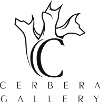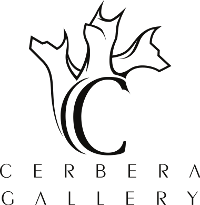
Alice Ballard – Ceramic Artist
Alice Ballard
Alice Ballard’s art is a reflection of her relationship with natural forms. These forms come to me on walks, while Ballard work in her garden, or appear as gifts from friends who share her fascination with the beauty inherent in Nature’s abundant variety of forms. It is often the metamorphosis of nature’s forms, as they change from season to season, that attracts Alice Ballard. She is endlessly drawn to that universal world in which differing life forms share similar qualities.
“I spend countless hours contemplating a particular form in order to feel its energy. It becomes a Zen-like connection not unlike a meditation. As an artist, I hope that those who choose to connect with my work can share some of the harmony and tranquility I feel through the creative process. Perhaps, at the very least, the viewer will give those small, often unnoticed forms in Nature a second glance.”
Alice R. Ballard. (born June 16, 1945, Florence, South Carolina) is an American ceramicist based in Greenville, South Carolina. Much of her work is characterized by the organic earthenware forms of closed containers, pinch pots, platters, pods, teapots, totems, small work, vessels and a series she refers to as her white work. Much of her work is finished with terra sigillata.[1] Alice considers her art to be “a reflection of [her] relationship with natural forms. It is often the metamorphosis of Nature’s forms, as they change from season to season, that attracts her to that universal world in which differing life forms share similar qualities.” Her aesthetic heavily references the mother/child/germination metaphor and also explores the more evocative realm of wonder and awe.
Ballard received her BS degree in design and MFA in painting from the University of Michigan in 1968. It is evident that her background in painting comes heavily into play during surface decoration with her ceramics. Munn uses the pods as a three-dimensional canvas using terra sigallata because it reminds her much more of paint. Whereas glaze really sits on top like icing on the cake, she really wanted to emphasize the cake. From 1974-2001 she has attended numerous workshops from the Penland School of Crafts in Penland, North Carolina. In 2004 she took a 40-day trip to China sponsored by The Center for International Research in Ceramic Art, West Virginia University. She has been a ceramic instructor on and off since 1967 and has her work in several galleries, including the Blue Spiral Gallery in Asheville, North Carolina and the Smithsonian American Art Museum’s Renwick Gallery in Washington D.C. where a white earthenware terra sigillata piece entitled “White Onion VII,” has been added to the permanent collection.
Ballard is known for her work with nature she has done much with bulbs, plants and seed pods that she collects on walks in her neighborhood. One notable walk for Alice was “ In the fall of 2005 while visiting Highwaterclays in Asheville, NC, her husband Roger and her stopped to walk their 2 dogs along the railroad tracks, near the river. On this walk she noticed a tree that had obviously sprung up from some wild seed, flung by a pod to a destination unknown. On this tree were clusters of little empty brown pods that looked like two little dimensional heart shapes that were open at one end and attached at the other. She snapped off two or three clusters and took them home to her studio in Greenville, SC. There they joined the company of many other forms collected on walks. Ballard loved these forms, shared them with others as she often does when she is teaching but did nothing but admire these special forms for several years. A call to the Clemson Botanical Gardens about this tree revealed that it was in fact a Royal Paulownia Tree (Paulownia tomentosa), an invasive tree that made its way from its native habitat in China. All this time,she was bonding with these little pod forms as her ideas for future forms to be made in clay percolated. The Wall Pod series eventually became the result of this lengthy but rich process.”








